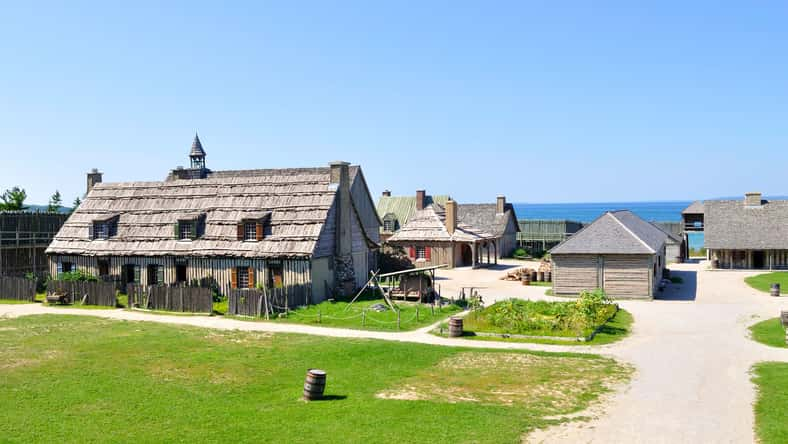An 18th-Century Brass Trade Ring Was Discovered During Excavations At A Colonial Fort In Northern Michigan

From a fort in northern Michigan, an 18th-century artifact has been unearthed. The artifact, a brass trade ring, was discovered during excavations at Colonial Michilimackinac, a reconstructed fort and fur trading site that is located west of the Mackinac Bridge.
The bridge establishes a link between the Upper and Lower peninsulas of the state, stretching across the expanse of the Straits of Mackinac, a body of water that connects Lake Michigan and Lake Huron.
Colonial Michilimackinac features a number of wooden buildings and a palisade. It has been deemed a National Historic Landmark that is part of Mackinac State Historic Parks. In 1715, the original fort and trading post was founded by the French.
In the early 1760s, they fell into the hands of the British, along with the remainder of their Canadian territory, which included Michigan at the time.
The site served as a bustling economic hub until the British abandoned it in the early 1780s after a new limestone fort was constructed on Mackinac Island, which is located just off the coast of Michigan’s Upper Peninsula in Lake Huron.
A spokesperson for the Mackinac State Historic Parks, Dominick Miller, called the find “incredibly exciting.”
Next to the site, public visitors were able to witness the historic discovery. The archaeologists presented the find to them and explained its significance.
Researchers with the archaeological program at the Mackinaw City Museum encountered the brass trade ring in a pile of rubble from the 1780s at a rowhouse within the fort known as House E.
According to the Mackinac State Historic Parks, this type of ring was referred to as a “Jesuit ring” in the 18th century because people associated it with Catholic missionaries in the region.

SunnyS – stock.adobe.com – illustrative purposes only
House E of the Southeast Rowhouse dates back to the 1730s and was consistently occupied by fur traders.
It first belonged to a man named Charles Henri Desjardins de Rupallay de Gonneville. Later, the house was inhabited by an English trader who has not yet been identified.
The research team uncovers artifacts at the site pretty frequently, but that doesn’t make the brass ring any less intriguing.
Other finds from House E that have been made in recent years include another Jesuit trade ring, a brass side plate from a British trade gun, a brass sleeve button, a lead seal dating between 1717 and 1769, the remains of a creamware plate, and a bone or ivory gaming die.
Colonial Michilimackinac is a popular tourist destination with costumed interpreters to provide a historical experience for visitors. However, ongoing archaeological excavations still take place at the site during the summer.
Excavations began in 1959, making it the longest-running archaeological investigation in North America. Work will continue at the fort every day until August 17.
Sign up for Chip Chick’s newsletter and get stories like this delivered to your inbox.
More About:News





